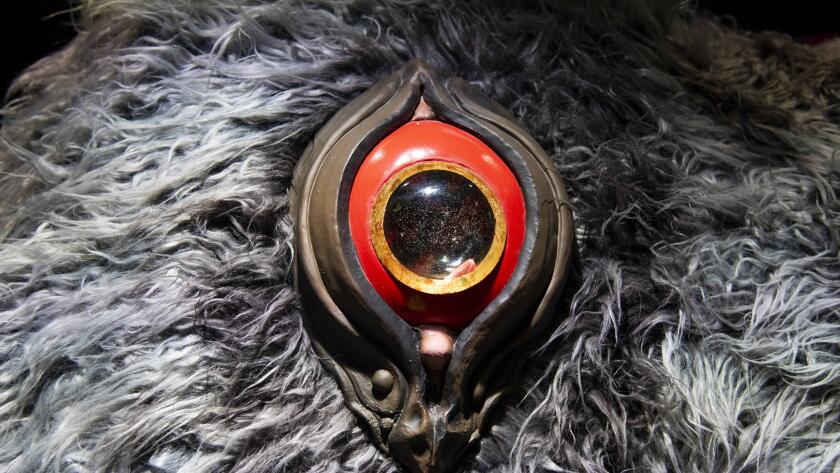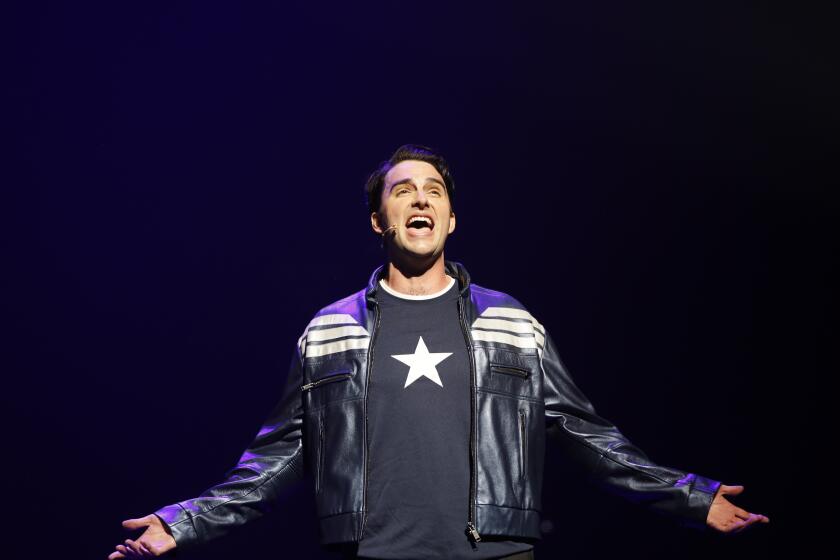Meow Wolf is ready for Texas. Is Texas ready for Meow Wolf?
- Share via
- Share via
GRAPEVINE, Texas — A Meow Wolf exhibition is designed to feel familiar at first. But the sensation doesn’t last. We’re soon entangled in the unknown, and asked to venture into fantastical settings that erupt into a twisted fairy tale.
The goal? To challenge our perceptions. What happens when a hot dog in a boiling pot becomes a mini-diorama for a piece of pork enjoying a hot tub while wearing a cowboy hat? Or a laundry room washer and dryer become portals into wonder-filled forests? Or an arcade game asks us to think deeply about our parental relationships and how we manage emotions?
All of this can be found in Meow Wolf’s fourth North American exhibition, dubbed “The Real Unreal,” opening July 14 outside of Dallas inside a former Bed Bath & Beyond at the Grapevine Mills mall. The Grapevine location will be instantly recognizable to anyone familiar with Meow Wolf’s work, especially its first location in Santa Fe, N.M., for which this one takes many a cue.
But Meow Wolf isn’t simply leaning on the past. Meow Wolf has arrived in Texas with a statement.
Will Heron has made sure of it. Meow Wolf had surprised fans when it unveiled Dallas and Houston as its next areas of expansion after opening in Denver and Las Vegas. After all, the progressive company, rooted in the freedom of artistic expression, has made support of the LGBTQ+ community a part of its corporate identity, and Heron, tapped by Meow Wolf to be the bridge to the local art community, heard the confusion.
“As we move to this red state, there was lots of backlash by people,” Heron says. “‘Why would you spend money in Texas? They hate gay people, and blah, blah, blah.’”
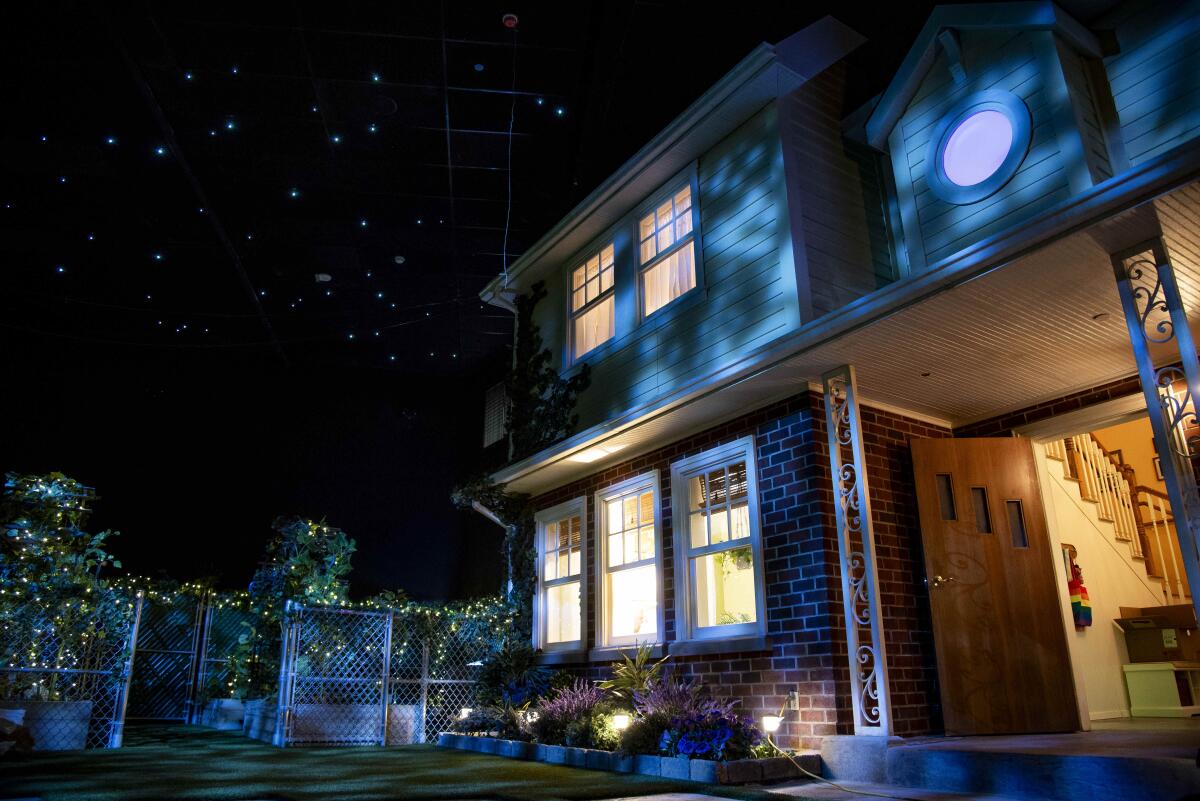
In downtown Dallas, along a walk-friendly stretch of McKinney Avenue about a 20-minute drive from Grapevine Mills, stands a mural about 50 feet tall. The piece is largely black and white, with pointed use of rainbow colors: Alien-like cactuses sprout from murky deaths. It’s a love letter — a “beacon,” says Heron, as he notes the use of the traditional Pride and Transgender Pride flags — to Texas’ LGBTQ+ community.
As Meow Wolf expands — and its chief executive talks of future locations potentially on the East Coast or abroad, as well as an impending office in Los Angeles — Texas politics is not the preferred topic of the top executives and artists who gave The Times a first look at the Grapevine location. Meow Wolf is planning to expand beyond buildings, with a mobile app, graphic novels and a role-playing game. But can the company’s tell-it-to-your-face artists maintain their ideals while actually becoming part of corporate America?
“Growing out of the muddy waters of Texas, you can still bloom beautiful weird lives, which are the cactus lotus that you see,” says Heron, describing his work. Commissioned by Meow Wolf, it’s also a signal that the firm won’t arrive in Texas quietly, landing at a time when the state’s GOP-led leadership has passed or advanced bills affecting the LGBTQ+ community and the U.S. Supreme Court has ruled that a conservative Christian web designer has the artistic freedom to refuse to provide services for gay marriages.
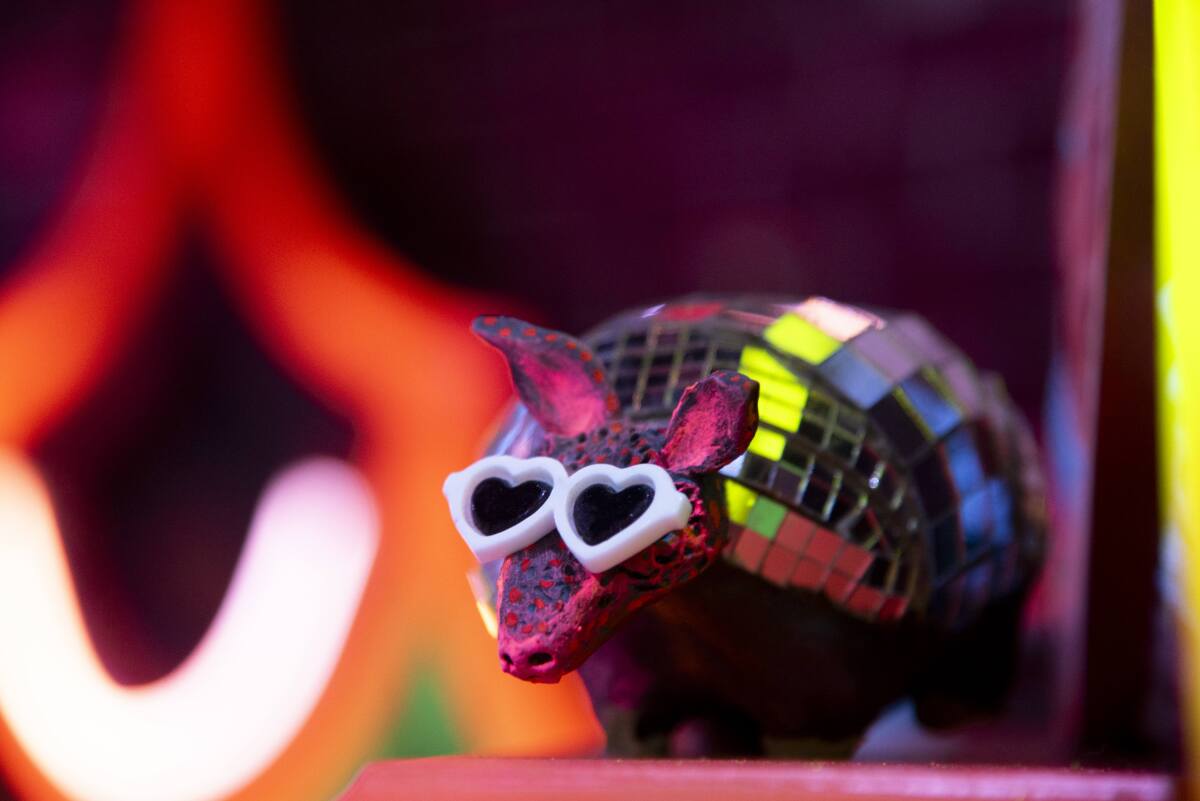
“If you drive an hour in any direction outside of our metroplex, you will be faced with many interesting billboards and yard signs telling us that trans people don’t exist and gay people are a sin,” Heron says. “I don’t think Meow Wolf is scared of it. They shouldn’t be. They’re coming here for the right reasons.” Will there be backlash? Yeah, Heron says. Will there be homophobic and racist comments from people online? Absolutely. “But that’s not going to stop us from continuing to provide a safe space for employees and guests.”
Meow Wolf already has received, if not a backlash, some questions. While Chief Executive Jose Tolosa states emphatically that the company is not a “political entity,” Meow Wolf throughout Pride month used its social media reach to delve into the history of LGBTQ+ activism as well as to amplify the work of a transgender education agency. The posts prompted trolling but also genuine questions from fans, such as the one who asked, “Then why are you opening a location in Texas?”
Meow Wolf’s response: “Valid question.”
The company explained that it is “coming to Texas to bring our support, love and adoration for those communities by supplying jobs, hosting events, supporting artists and doing everything we can to give space and time and resources to the communities of Texas facing the most backlash.” Meow Wolf added that it’s in communication with groups such as the Human Rights Campaign Dallas/Fort Worth as well as Equality Texas. “We are committed forever and ever to be a force for good.”
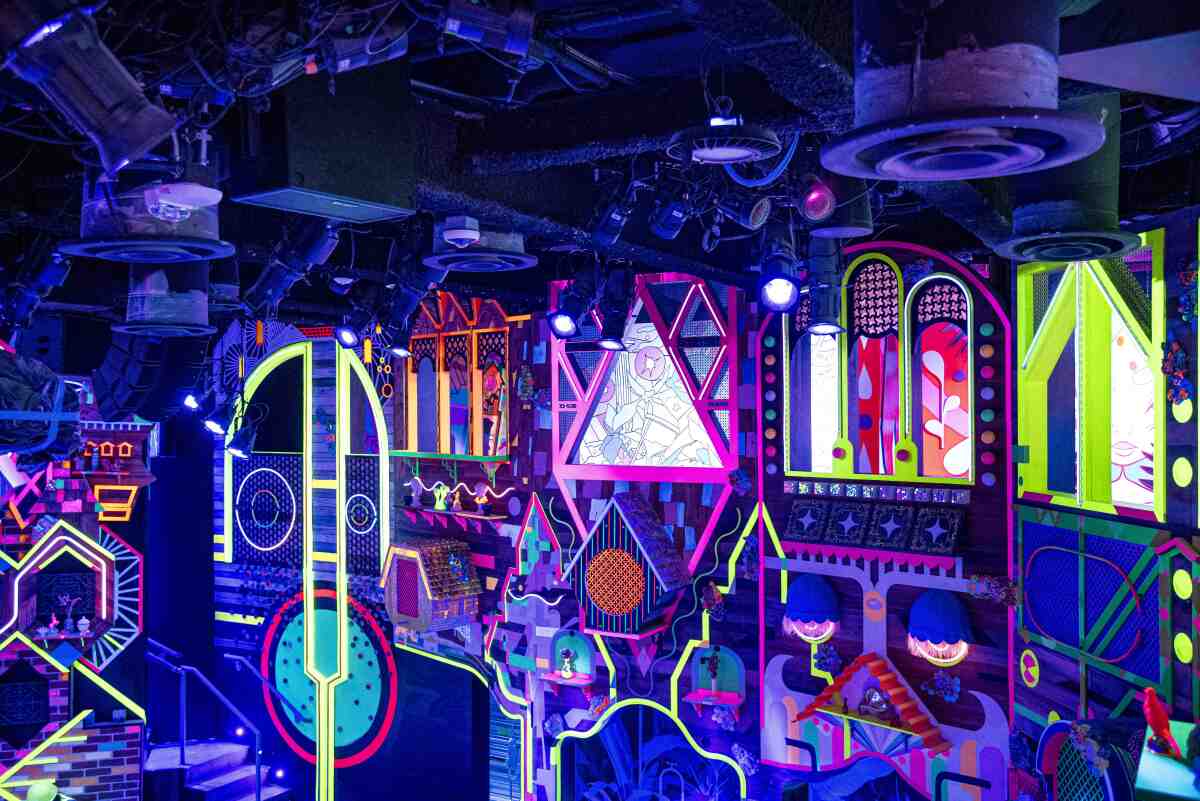
The art inside “The Real Unreal” in Grapevine is decidedly individualistic and outlandishly colorful. The exhibition is, in a slight twist for Meow Wolf, deeply personal and intimate. Whereas Santa Fe’s “House of Eternal Return” and Las Vegas’ “Omega Mart” were heavily sci-fi stories with occasional nods to climate change and corporate waste, “The Real Unreal’s” story tackles more existential themes of grief and heartbreak, looking to art for its ability to heal and bring communities together.
The mall location — just past a Neiman Marcus outlet and near a Denny’s — is graced with a pastel-hued mural that’s an unadulterated celebration of rainbows and artist expression.
Though the piece has various meanings — contributing artist and Meow Wolf co-founder Caity Kennedy says it’s about “the living world and the spirit world folded together” — no one denies how it’ll be read. “I mean, hey, I appreciate that we’re willing to be bold and trying to be who we are,” says Meow Wolf’s chief development officer Amanda Clay. “That’s going to mean that we’re not for everyone in the places that we go, and I think that’s OK.”
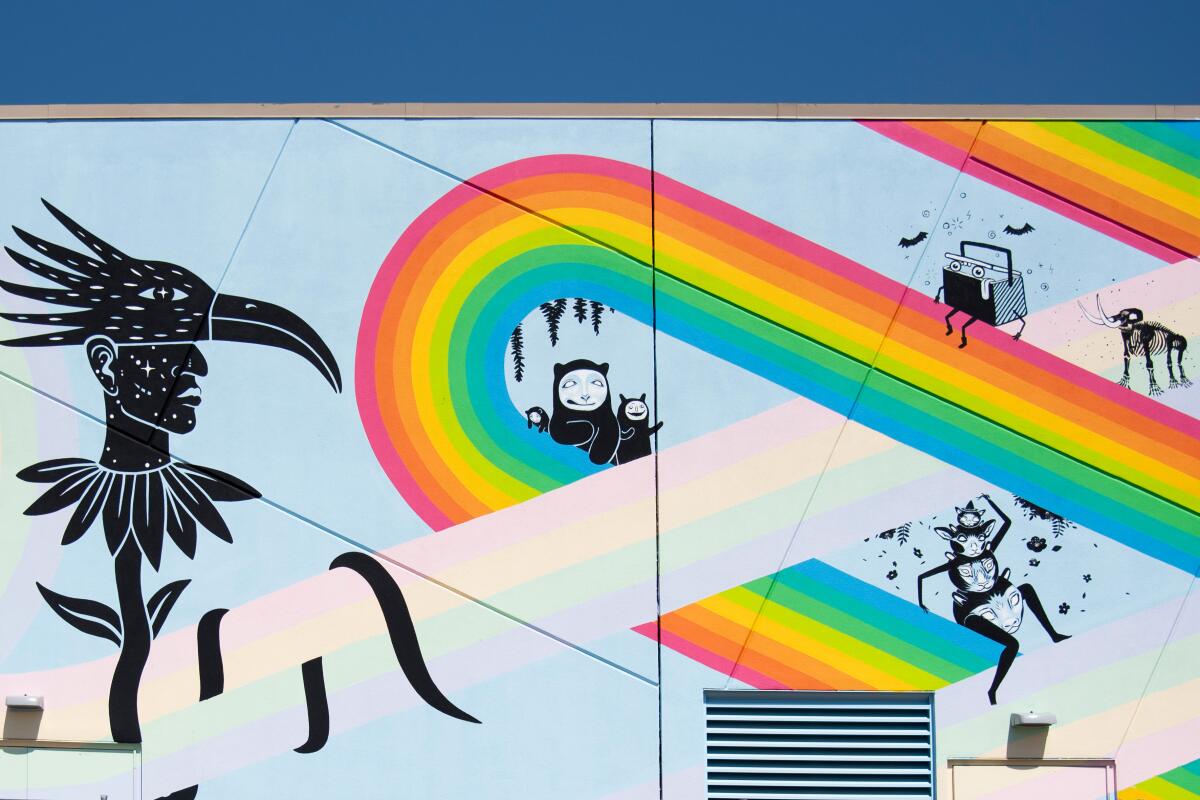
Meow Wolf artists can appeal to a large audience, says Martin Lewison, a theme park expert and business management professor at Farmingdale State College in New York. They create a zone that’s “disconnected from reality. They want you to leave this plane and visit another plane, something that’s so far out that you not only don’t know where you are but you never would have dreamed of seeing a place like this.” And, Lewison adds, Dallas is a large enough metropolitan area that Meow Wolf will be just fine. “If a Republican never walks into Meow Wolf, they can still have a financial success,” he says.
Politics, says Clay, change. “Part of what we’re trying to do is bring immersive art experiences that help open people’s minds and get them to think about things differently. That’s needed everywhere. ... And I think it’s about finding a safe haven for employees, and feeling like they can show up at a place of business and be themselves and be respected and feel like they’re at a place that really is trying to be progressive.”
Meow Wolf’s original Santa Fe location has regularly pulled in about 500,000 people per year, and “Omega Mart” in Las Vegas, which opened in February 2021, topped more than 1 million visitors in its first 12 months. Meow Wolf doesn’t release revenue figures, but raised more than $250 million in private funds through mid-2020 and said that its three locations last year drew 2.7 million guests. Today Meow Wolf boasts more than 1,200 employees.
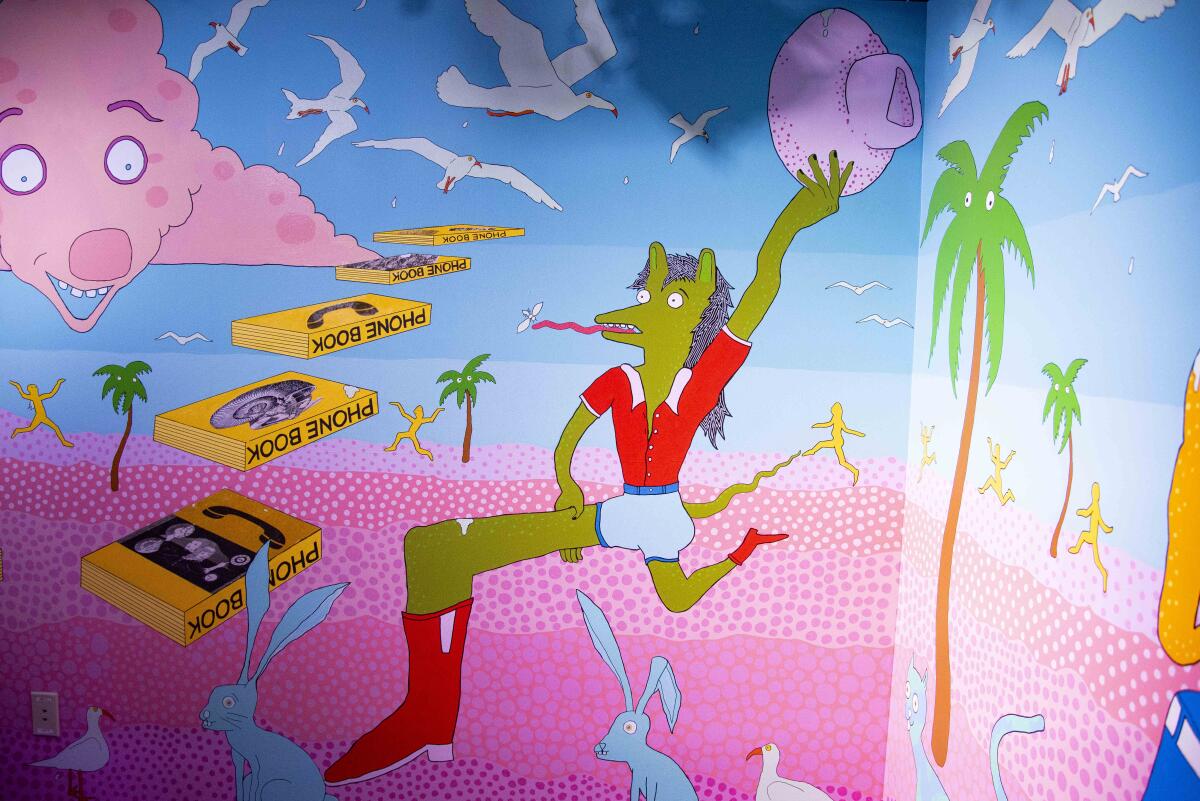
The company’s rise from punk art collective in 2008 to an “experience economy” corporation has been meteoric, attracting creative talent from the likes of theme park giants the Walt Disney Co. and NBCUniversal. It is spoken of as a fearless competitor, one that believes that art and design — not intellectual property — are what draw an audience.
Tolosa rattles off city after city as a possible U.S. destination for Meow Wolf, noting that the company is looking not only for sizable spaces but also landlords who are receptive to the idea of tearing them up. “We should go more coastal,” Tolosa says. “Expect us to be very aggressive in pursuing big cities, and we should be going international at some point.” But first, expect Meow Wolf to launch its story-expanding mobile app, and to begin announcing projects that bring its narratives into other mediums.
The Meow Wolf design philosophy is one that’s based on active participation of the guest, a shift from more passive forms of entertainment of yore, be it a museum or the early days of theme parks. To walk through a Meow Wolf space is akin to traversing a video game, where guests have multiple paths and create their own narrative. The art is increasingly interactive. In Grapevine, you may find an ATM that’s not actually a money-dispensing device. You can uncover its secrets — if you can find the hidden password.
“At Meow Wolf, we say, ‘Come here for something that’s hard to explain,’” says Dale Sheehan, the creative lead for Grapevine, who joined Meow Wolf after 10 years with Walt Disney Imagineering, the division focused on theme park experiences. “They come in and every moment along the way they are never invited to turn their brain off. They have to leave it on. Every step is another decision they have to make, a mystery to solve, a riddle to untangle.”
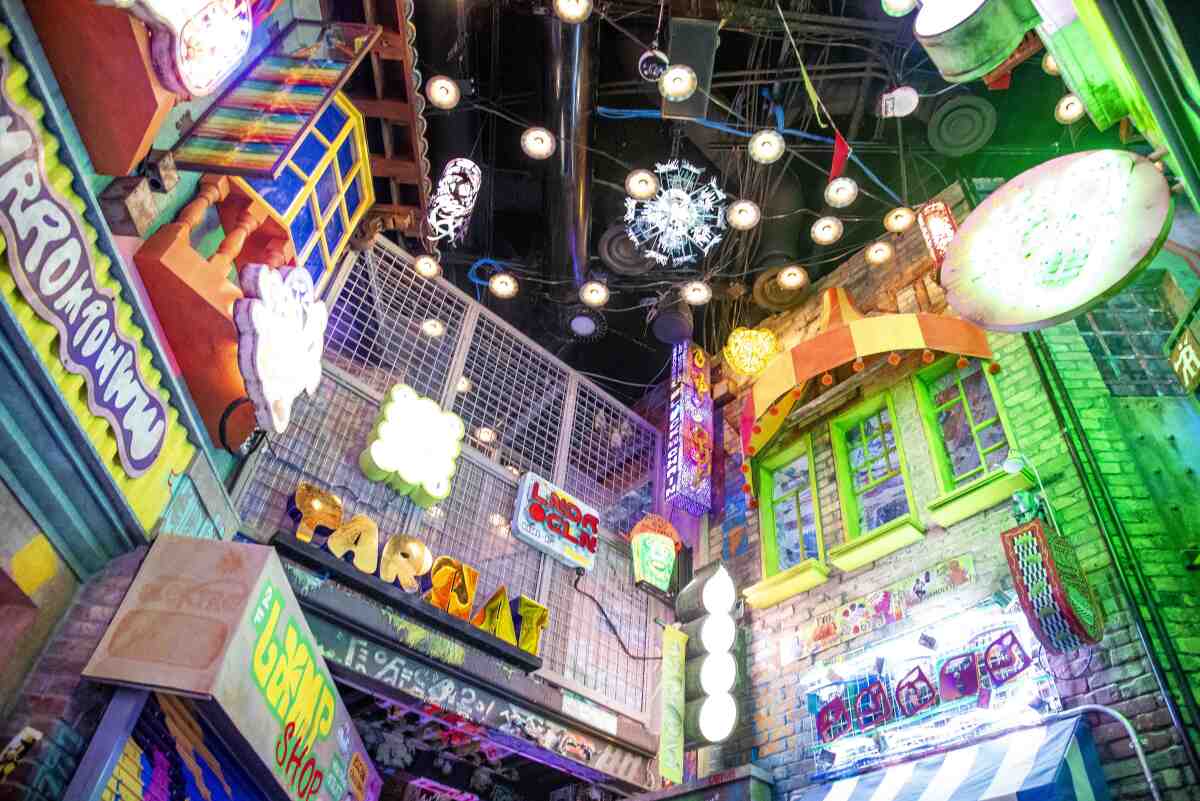
It’s what has long separated Meow Wolf from other so-called “immersive” experiences, many of which put the emphasis on social media selfies. In fact, “The Real Unreal” is not necessarily easy to photograph. The show lighting begs users to step in closer, to hunt for and to touch hidden details — a place where a mystical winged creature in a jar is also part of a narrative puzzle. “It’s a space no one has gone into,” says Dallas-based artist Dan Lam, sitting in her warehouse studio in the city’s Tin District and surrounded by wildly colored sculptures made to look like dripping goo. Lam has created a kaleidoscope wall at Grapevine that looks fluid, a sculpture of candy hues that feels perpetually in motion.
“I know there are criticisms of it, because it does step into theme park-esque. But it’s a marriage of the museum and a theme park. And there’s this idea that museums are a little stuffy, a little removed from the public. Theme parks are for everybody. Having both of those come together to create art is great — it’s for the people.”
And that, says Meow Wolf veteran Kennedy, is exactly why Texas was a vital location for the collective. If Meow Wolf truly believes its art can change minds, Kennedy says, the group needs to be in spaces where it will raise an eyebrow.
“We need to go to places where we will be welcomed by a really large number of the community who agree with us, politically, but we also need to go places where we will be at odds with a lot of the people there,” Kennedy says, adding that in such cities Meow Wolf “will be an incredibly welcome refuge.”
“But also,” Kennedy continues, “who is in more need of having some space to potentially see themselves differently than either someone who has been ostracized and treated like they’re not welcome in their own home — their own town — or people who are so afraid of certain other people that they do that to them? If there can be space for people to feel safe and explore things they’ve never seen before, the really grandiose and possibly impossible vision for art like that is to maybe wake up a small part of someone that wasn’t awake before.”
Or as Clay puts it: “You can also argue the other side of this. Texas needs us more than some other states.”
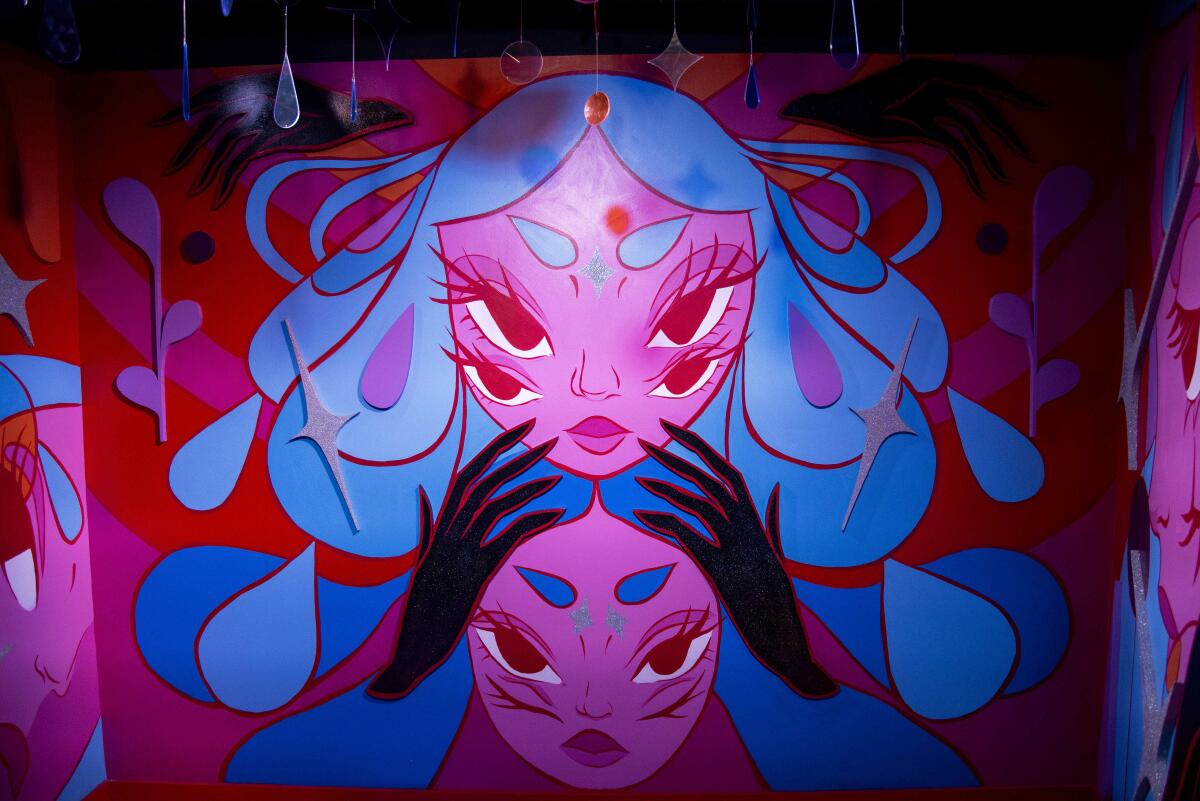
Sheehan was sitting in a steakhouse, with a pianist providing a backdrop of Disney standards, when he asked a waiter for opinions of the Grapevine Mills mall, which in addition to Meow Wolf is home to two other major theme-park-like experiences, Legoland Discovery Center and Peppa Pig World of Play. The server didn’t hesitate: “A cesspool.”
Sheehan and a few Meow Wolf companions cringed and laughed awkwardly, but they shouldn’t have felt surprised. Meow Wolf has a history of entering unexpected places and, as documented in the myth-making 2018 documentary “Meow Wolf: Origin Story,” of recycling materials on their way to the trash heap. There’s a room in Santa Fe dubbed Trash Temple, constructed entirely out of landfill-destined objects such as bottle caps, old toys, outmoded cellphones or aluminum cans, all of it dedicated to America’s devotion to consumption. (The theme is used to wild comedic effect in the fake grocery store of Las Vegas’ “Omega Mart,” where you can take home cereal made of plastic, complete with real data on how much plastic humans actually ingest.)
“The Real Unreal” continues a Meow Wolf penchant for abandoned buildings that started in 2017 with “House of Eternal Return,” which was famously constructed in a defunct bowling alley after a $3 million investment from Santa Fe local and “Game of Thrones” author George R.R. Martin. It’s not the only similarity.
Like “House of Eternal Return,” “The Real Unreal” first takes visitors into a suburban home, this one belonging to a blended family that has found itself living together in a time of crisis. “Our ambition was to tell a very personal story with relatable characters that people could see themselves in. ... In order to pull that off, we felt that having a familiar, less sci-fi start was important,” Sheehan says.
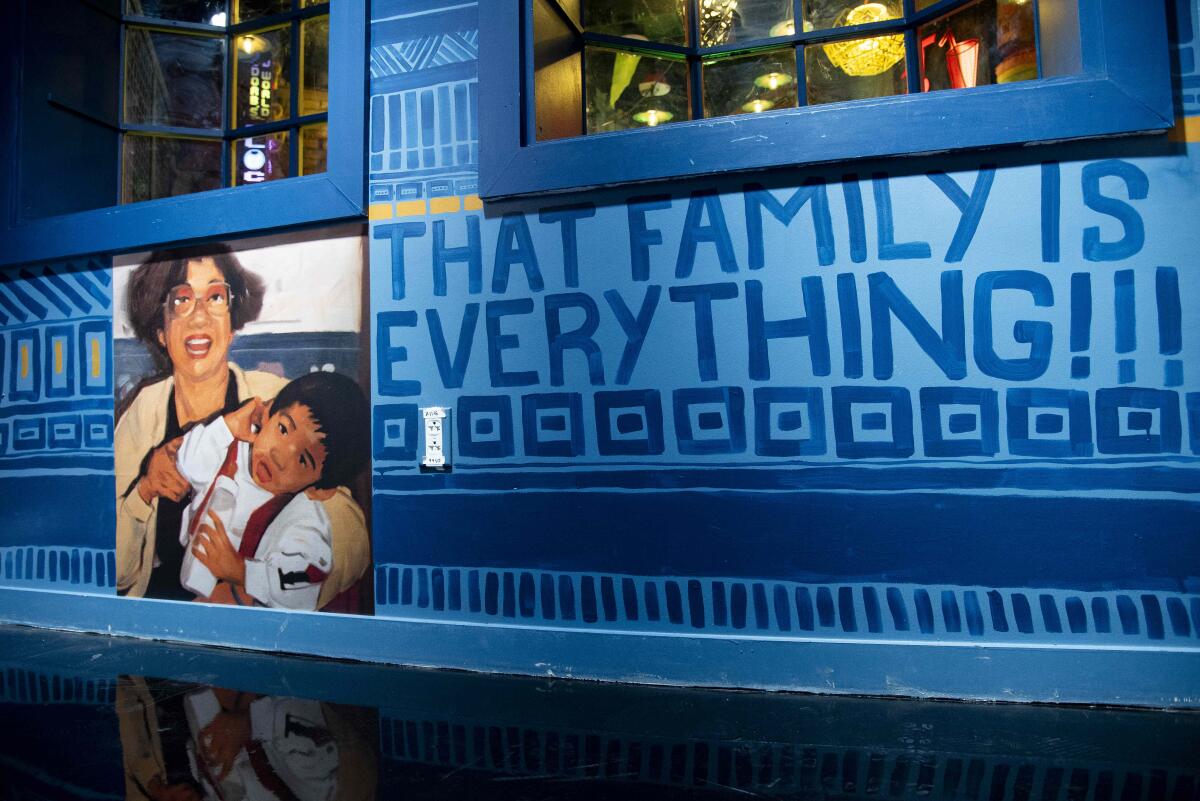
In the narrative, a father has descended into grief after the loss of his wife, and his daughter, also struggling, returns home in his time of need. While she discovers new and old passions, sadness breeds miscommunication, and a young boy goes missing. No one’s ever in any danger, but shifting generational perspectives allow for healing. In Meow Wolf’s take on a modern fairy tale, it’s not the happily ever after that draws us in as much as it is the drama that precedes a happy ending.
“As far as the story of the family, they are dealing with hard topics, but we, as humans, are naturally tuned to find our people, our tribes,” Sheehan says. “Each other’s sadness doesn’t make us sad as much as each other’s struggles comfort us to see that we’re not alone. We’re seen. We’re felt. We’re not trying to tell a sad story with a bummer ending. The story has a happy ending. But the struggle along the way should make people feel that their own struggles are real too.”
Beyond the house setting, Grapevine does revisit and expand upon some Santa Fe art pieces. A new interpretation of the mystical, black light forest known as the Glowquarium is drastically more dizzying, with an assortment of not-so-hidden creatures, and there are nods to Santa Fe’s “interdimensional vacation resort,” downtown district and more. Everyone at Meow Wolf strongly pushes back on the notion that the company is copying itself or seeking ways to build quickly.
“For all of the surface-level similarities, there’s so much that’s been expanded upon,” says Sarah Bradley, a Meow Wolf senior creative director and story editor. “Baseline, yeah, we could call the spaces the same, but it’s very different. They all have unique art. It’s a different expression. It’s more to me like an artist returning to a theme than it is any type of repetition. ‘Omega Mart’ was not the first time Meow Wolf explored the theme of a grocery store. I don’t think anyone who has seen the Glowquarium would step into the one in Grapevine and go, ‘This is boring. I’ve seen this before.’”
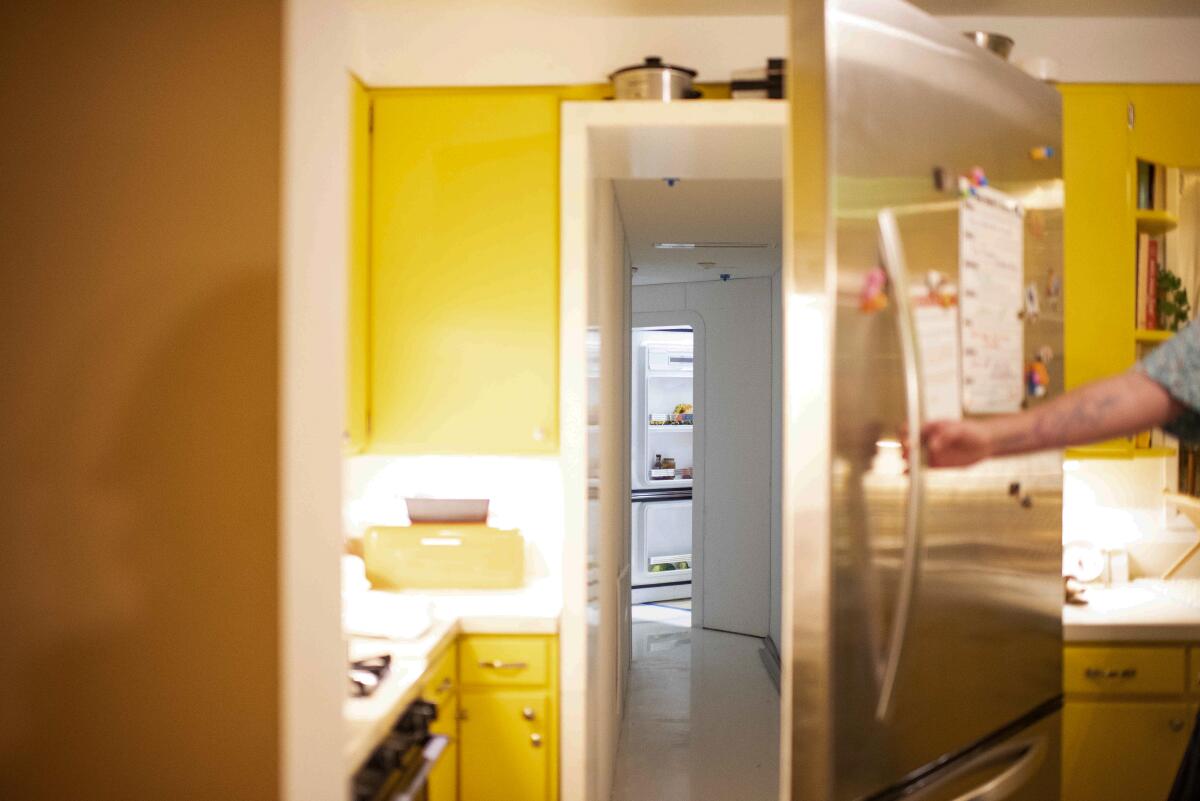
In an essay articulating some of the motivations behind “The Real Unreal,” Meow Wolf co-founder Emily Montoya writes that the exhibition is “a revisitation of the themes, ideas and images that inhabit Meow Wolf’s collective imagination and overflow from the realm of the imagination into the realm of the material. It’s not a remake or a sequel. It’s a deepening of the roots that reach into the realm of the collective unconscious.” Montoya adds that the very desire to “return to the past clashes with the impossibility of things ever being the same.”
Kennedy is more direct: “We’re not a manufacturing process. We can’t refine it to a point where we know exactly how it’s going to go. If we do, most of us won’t bother doing this.”
Longtime Meow Wolf contributor Chris Hilson, who once dreamed of being an Imagineer, is building the third iteration of his Babayaga Treehouse in Grapevine, a wooden hut inspired by Slavic folklore that’s filled with small murals, story-defining objects and maybe even some hidden doors. He notes Meow Wolf is a long way from its dumpster-diving days.
“Now we’re themed entertainment,” he says, as he recuts the door of the hut to make it wheelchair accessible.
“I never thought I would have an opportunity to work in the arts professionally,” Hilson says. “But I feel like it’s something we’ve all earned with every single show that we’ve done, whether it’s a larger show that does get a lot of attention or a smaller one that’s mostly forgotten and not recorded. This is a culmination of the last 15 years.”
On an afternoon in which Dallas temperatures are approaching 100, Ricardo Paniagua sits before a flame in his un-air-conditioned warehouse studio. He is mid-meditation, kneeling before what he describes as a geometric representation of Hindu deity Shiva. His piece for “The Real Unreal” is a tower of reflective geometric shapes in a darkened, triangular room — a place of calming amid Meow Wolf’s typically maximalist approach. Audio is designed to get guests to slow down, and the lights are used in such a way that those who truly stop and pause may not know where the sculpture ends or begins.
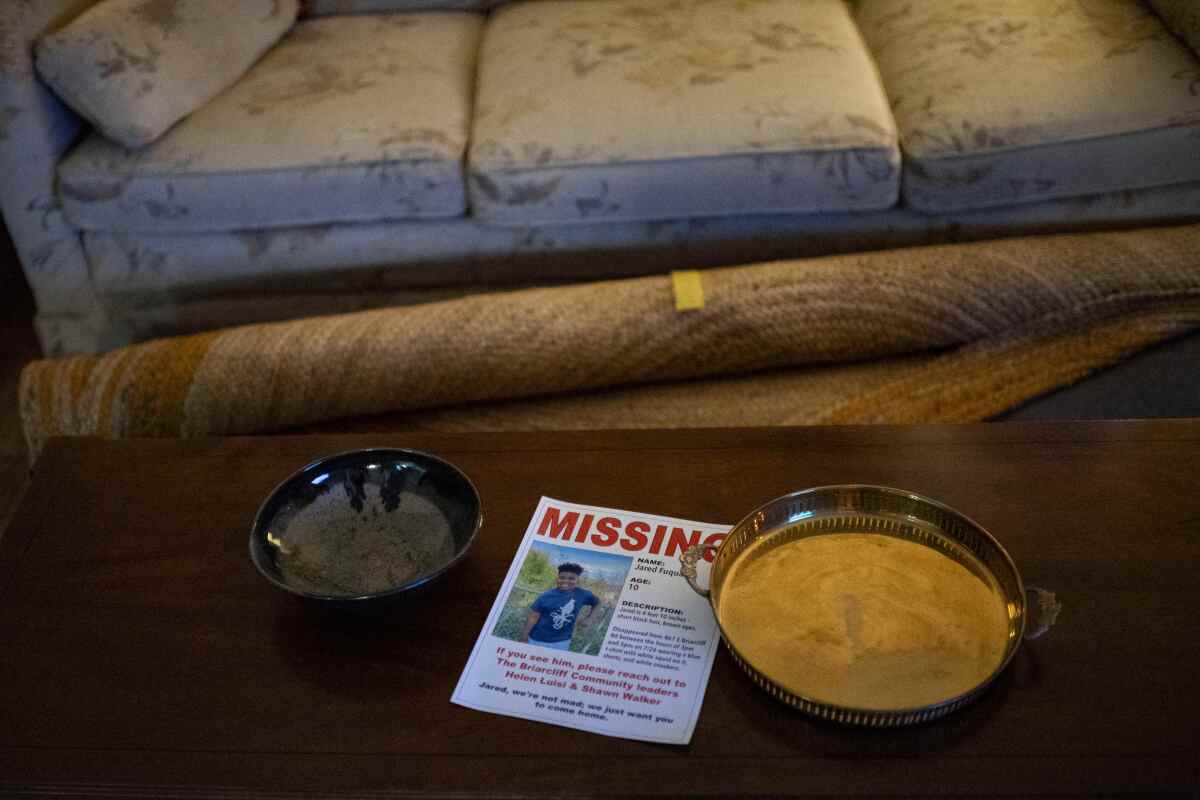
“I go into Hindu temples, and they’re alive with energy,” Paniagua says. “This is the first opportunity I’ve had to create a permanent, sacred space.”
Other works more overtly lean into “The Real Unreal’s” story, such as Desireé Vaniecia’s painting “The Three Fates.” Her life-size work captures three figures in a lush, forestlike setting, their subtle facial expressions hinting at a metaphorical representation of the various emotions that one faces at a crossroads. “They have the answers, but they’re not just going to outright give you the answers,” says Vaniecia of the Greek mythology-influenced work, which will be sold in the Grapevine gift shop as a puzzle. Just outside the exhibit near a cafe, a wall-sized painting from Sam Lao is an arresting work of sultry poses and figures in mysterious, beak-adorned baseball caps. It’s another piece that plays into Meow Wolf’s quest for personal identity, and how each of us are creatures capable of constant change.
And that just scratches the surface. What immediately stands out in “The Real Unreal” is the way its winding paths, hidden nooks and relaxing huts invite guests to communicate. There is no map, and getting lost will be part of the journey. It’s a design with a mission to foster closeness, within your traveling party but also with strangers.
“We build shared experiences because we need them,” Sheehan says. “It may be an oversimplification, but at one point along this journey for me with Meow Wolf, I distilled what we do down to: We create opportunities for strangers to bump into one another. It’s not just that, but there is something to that. We put you into a space where your expectations are so defied, where it brings down your normal barriers. That creates a moment where a stranger can be a friend, and a stranger can be an ally.”
It’s a philosophy and a thesis that still allows for a bit of abstractness and unpredictability. And after building installations in New Mexico, Nevada and Colorado, Meow Wolf is betting that it has found a formula for scale. It’s just one that’s counting on us all being a little curious and eccentric. “There’s enough weirdos out here,” Hilson says of Grapevine. “They need a home.”
COVID-19 put a pause on Meow Wolf’s most ambitious, risk-taking and topical endeavor yet: the grocery store-inspired Omega Mart, planned for Las Vegas.
‘Rogers: The Musical,’ Disney’s new Captain America-inspired musical, started as a joke in a Disney+ series and now is part of the resort’s big summer offerings.
More to Read
The biggest entertainment stories
Get our big stories about Hollywood, film, television, music, arts, culture and more right in your inbox as soon as they publish.
You may occasionally receive promotional content from the Los Angeles Times.
